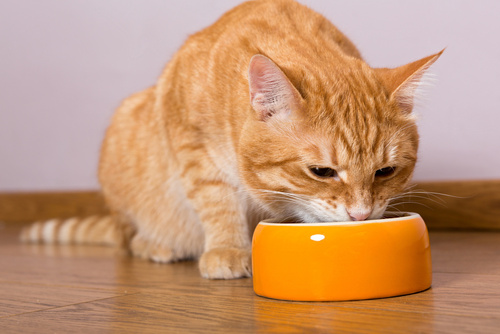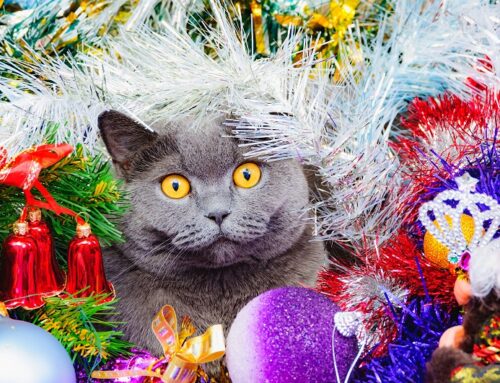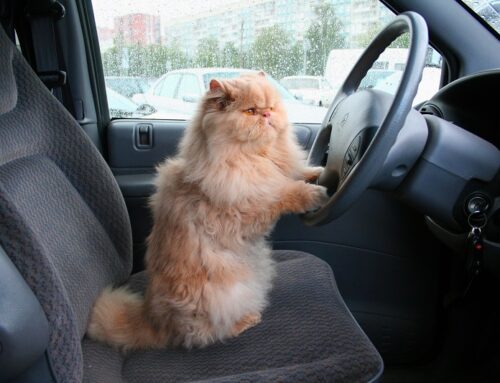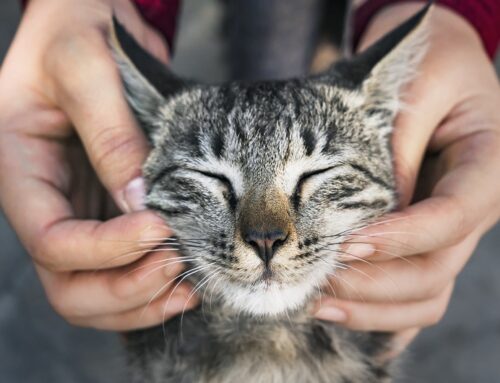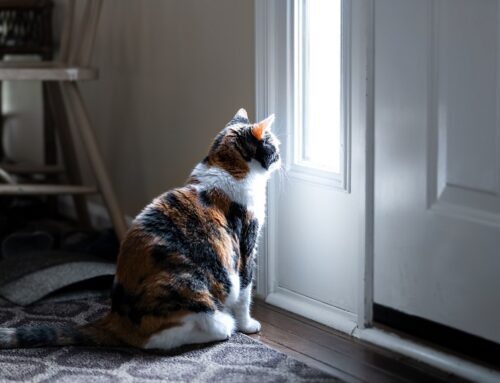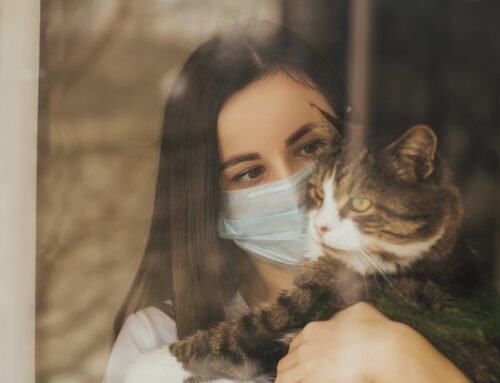Happy New Year!
We (finally!) finish the story of cats’ dietary uniqueness among animal species…
Cats do not store most water-soluble B vitamins (the exception is cobalamin, which is stored in the liver) and require a continually-available dietary source to prevent deficiency. Cats also require increased amounts of many B vitamins, such as thiamin, niacin, B6, and–in certain circumstances–cobalamin (B12). Thiamin and cobalamin deficiency can occur in anorectic cats. Thiamine deficiency can also occur in cats consuming diets high in thiaminase, which is found in high concentrations in seafood. Does this mean that cats should not eat seafood-based diets? No, as most fish-based canned diets still contain a fair amount of chicken or other animal-based protein. A treat of canned tuna will not hurt anything either; it just should not be the main source of protein in their diet. Niacin is one of the vitamins cats can synthesize, but their dietary requirement is 4 times higher than that of dogs. Luckily, deficiency of B vitamins is rare in healthy cats. Each of these vitamins are found in high concentrations in animal tissues and are added to commercial diets formulated for cats.
Of the fat-soluble vitamins (A, D, E, and K), cats have special needs for vitamins A and D. Vitamin A is found naturally only in animal tissues. For cats on commercial diets, it must be provided in its biologically active form because cats cannot convert β-carotene (which is plentiful in plants) to retinol (the active form of vitamin A). So, even if your cat likes to eat carrots, he will not get any of the nutritional benefits of it. Similar to vitamin A, vitamin D (e.g., calcitriol) is also required in the diets of cats. Cats are unable to meet their metabolic needs for vitamin D via dermal photosynthesis because they lack 7-dehydrocholesterols. So, even though most cats love to lie in the sun, they do not obtain any vitamin D from it. Vitamin D is found in high amounts in the liver and fatty tissue of animals.
Cats have a less-sensitive response to thirst and dehydration than dogs or other omnivores. They adjust their water intake to the dry-matter content of their diet, rather than the moisture content. This reflects their early status as desert-dwelling animals, as well as their development as strict carnivores which obtain most of their water requirements from consumption of prey. This means that cats eating a commercial dry food diet will, physiologically, consume approximately half the amount of water compared with cats eating a canned diet, even though cats on a dry diet spend much more time at the water bowl.
I will briefly diverge here to discuss good, quality food and the pet food market. Pet food manufacturers are an industry (like most) out to make a profit, and as such, they will follow the trends of their consumers. The current trend being “if it’s healthy for humans, it must be healthy for my pet”, which is not actually good for cats. Pet food companies are not out to educate consumers on what their pets truly need; many cater to what people THINK their pets need. I never pick a cat (or dog) food based on a company’s name or advertising campaign. I always read the ingredient label and pick a food that has meat or meat by-product (by-products are pretty much anything that is not muscle meat, such as organs; bone marrow; and bones) as the first 3 ingredients. I stay away from any food that has a long list of any type of plant material (however, all commercial canned diets will have SOME amount in it). I also stay away from foods which contain any type of “meat meal” (meal is protein that has been processed down to a powder). It is not necessarily bad, but it is a cheap way to increase the protein content of a food while not adding any nutritional value (because the rendering process destroys all of the vitamins and moisture). To me, meat meal equals a lower quality food in general. There are some “low-quality” foods that are actually very good for cats and some “high-quality” foods that are very poor choices for them.
So, in summary, cats are true obligate carnivores. They do not need (and cannot utilize) any plant materials (such as fruits, grains, vegetables, and starches) in their diet. They are perfectly evolved to obtain ALL of their nutrition and MOST of their hydration from animal-based proteins. It is only when humans get involved that things get crazy for them. The “perfect” diet for cats is one based on their natural diet, and for cat owners who wish to feed that type of diet, there is a great recipe at http://www.catinfo.org/?link=makingcatfood. I, personally, have no great desire to grind up whole carcasses for my cats, but some of our clients are willing and able to do so! For those of us who cannot make food for our cats, the next best thing is either a commercially-prepared raw diet or a good, quality canned pate diet. Also, extra water should be added to either diet.
I hope some of you have found this diet series to be helpful for you and your feline friend. As always, if you have any concerns or questions about your cat’s diet, give us a call at Cats On Broadway Hospital at 406-728-0022. Until then, have a prosperous January, and we’ll see you again in February!
=^_^=



